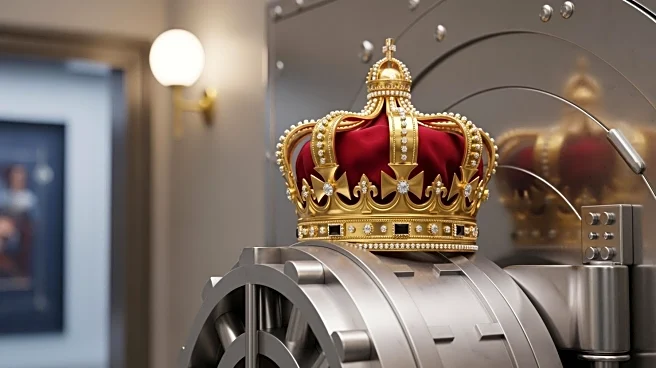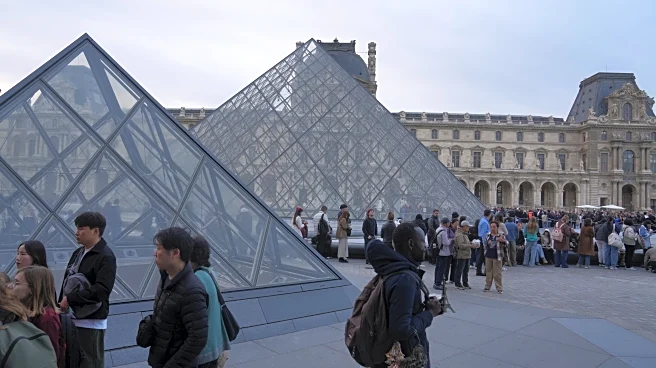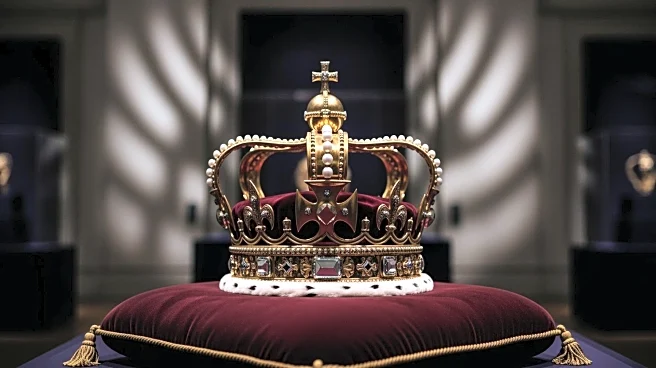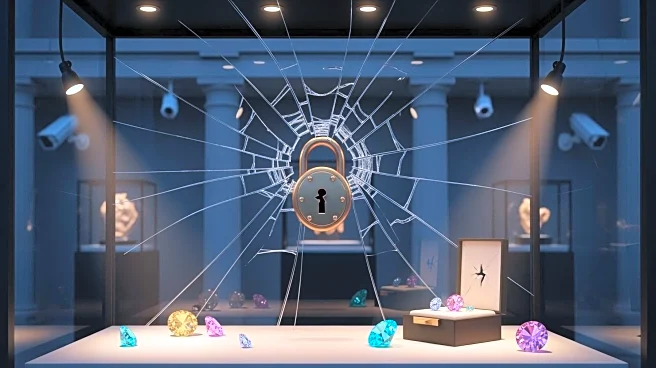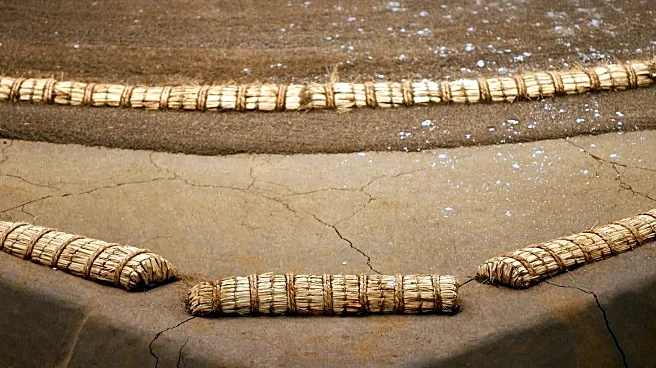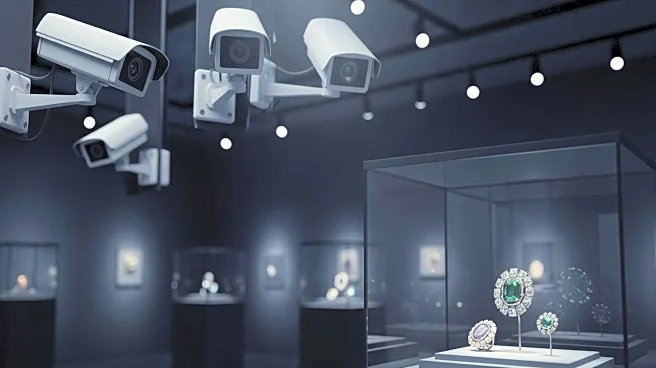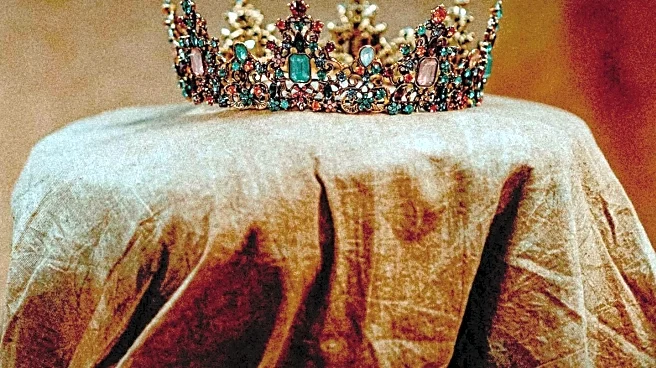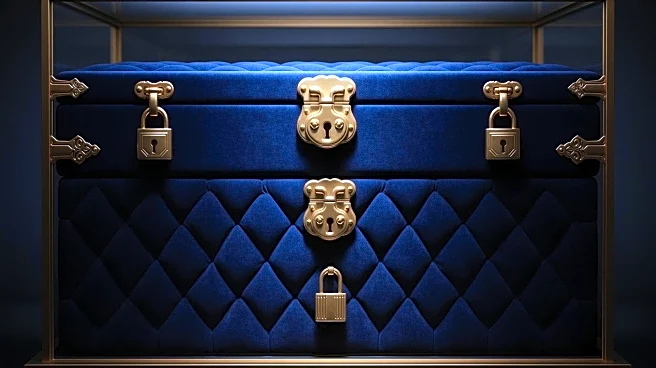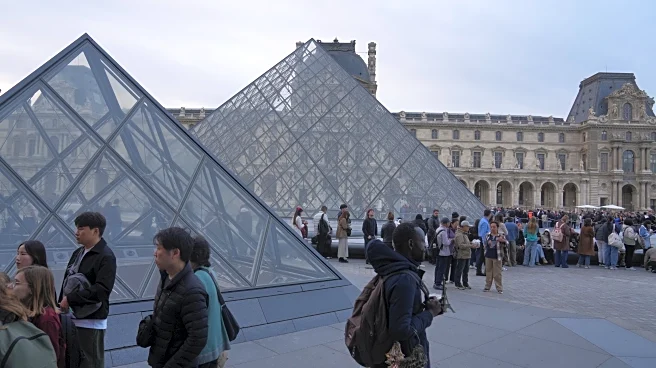What's Happening?
The Louvre Museum in Paris has transferred some of its most valuable jewels to the Bank of France after a daring heist exposed significant security vulnerabilities. On October 19, thieves executed a meticulously
planned robbery, stealing eight priceless pieces from the museum's Apollo Gallery, which houses the French crown jewels. The thieves used a crane to break into the museum during opening hours and made their escape on motorbikes. The stolen items are valued at approximately $102 million. In response to the theft, the Louvre, under a secret police escort, moved some of its remaining precious items to the Bank of France, which is located nearby and known for its secure vaults.
Why It's Important?
This incident has sparked a global conversation about the security of cultural institutions, particularly those housing invaluable artifacts. The theft is seen as a national embarrassment for France, highlighting potential lapses in security at one of the world's most visited museums. The heist not only represents a significant financial loss but also a cultural one, as the stolen items are part of France's heritage. The transfer of jewels to the Bank of France underscores the need for enhanced security measures to protect national treasures. This event may prompt other museums worldwide to reassess their security protocols to prevent similar incidents.
What's Next?
In the wake of the heist, there is likely to be increased scrutiny on the Louvre's security measures, with potential reforms to prevent future breaches. French authorities may also intensify their investigation to recover the stolen items and apprehend the perpetrators. The incident could lead to broader discussions on international cooperation to combat art theft and protect cultural heritage. Additionally, other museums may take proactive steps to secure their collections, possibly leading to innovations in museum security technology.
